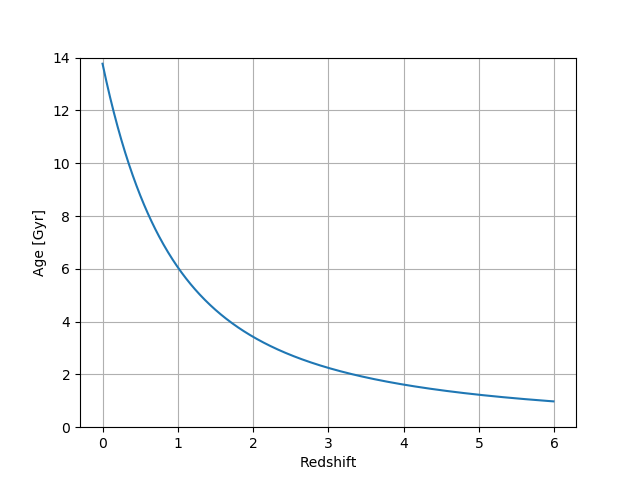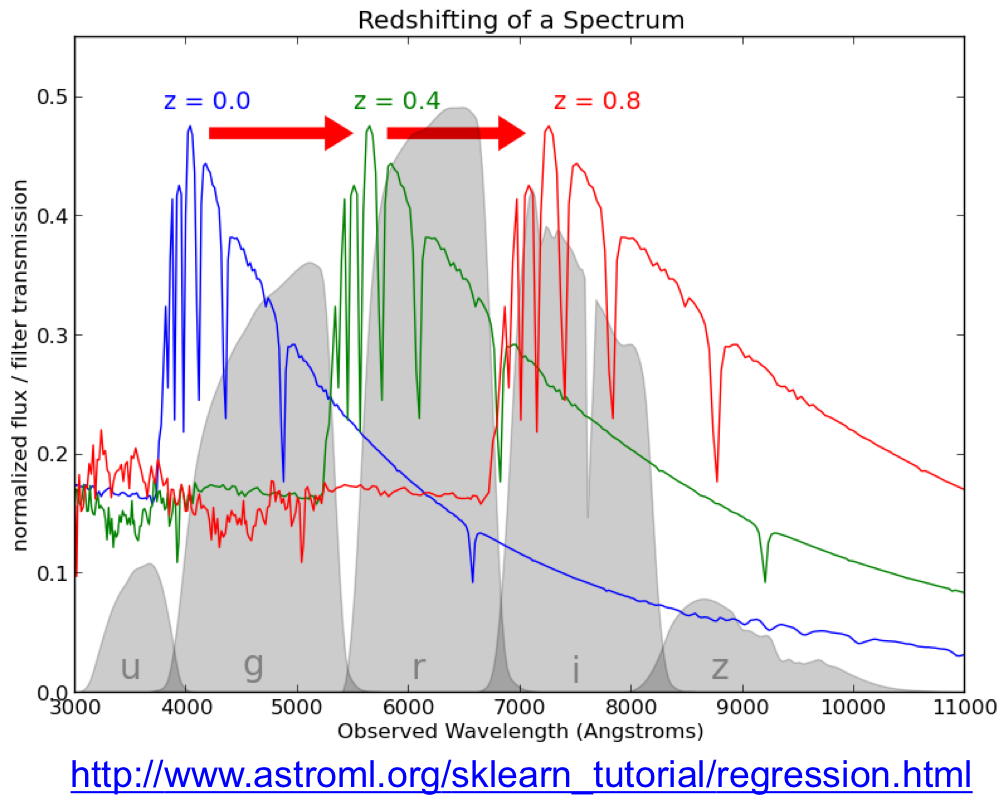Galaxy Formation: high-z observations
Complications:
Cosmological effects distort our view of high redshift galaxies:
- High redshift galaxies are faint and small
- Their light has been redshifted
- At cosmological distances, their surface brightnesses are systematically fainter
We use imperfect clocks to judge evolution:
- The formation of stars is not the same thing as the formation of galaxies. Galaxies can have old stars but assemble late.
- Evolution proceeds faster in dense environments:
 . Things that might take time in the field environment can happen faster in dense environments.
. Things that might take time in the field environment can happen faster in dense environments.
- Metallicity is a poor clock for measuring time --
metallicity can build up quickly in regions of high star formation,
much more slowly in regions of low star formation.
High redshift galaxies are intrinsically different
from those around us today -- they are younger. Think of comparing a
massive galaxy nearby to a massive galaxy in the early universe:
- Different stellar ages, so different star formation histories
- Different assembly histories
Reminder: Connection between redshift and age (for H0=72 km/s/Mpc, OmegaM=0.25, OmegaL=0.75):
So for example the difference between z=0 and z=1 is ~8 Gyr, while the difference between z=4 and z=5 is <0.5 Gyr.
The Hubble Ultradeep Field
Looking across space and back through time/redshift: how do we assess
redshifts for galaxies?
- Spectroscopic Redshifts: accurate, but time consuming
and need very big telescopes. Example:
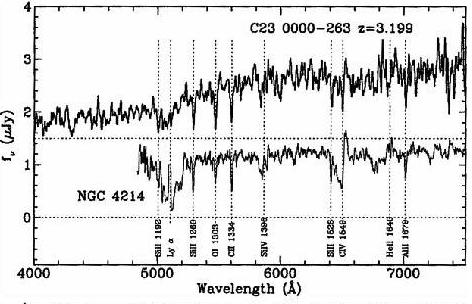 (courtesy Mauro Giavalisco)
(courtesy Mauro Giavalisco)
- Photometric Redshifts: Estimate redshifts based on
colors and brightnesses. Not as accurate, but faster. Example:
How well do they compare? Not bad, if you can tolerate some catastrophically bad outliers:
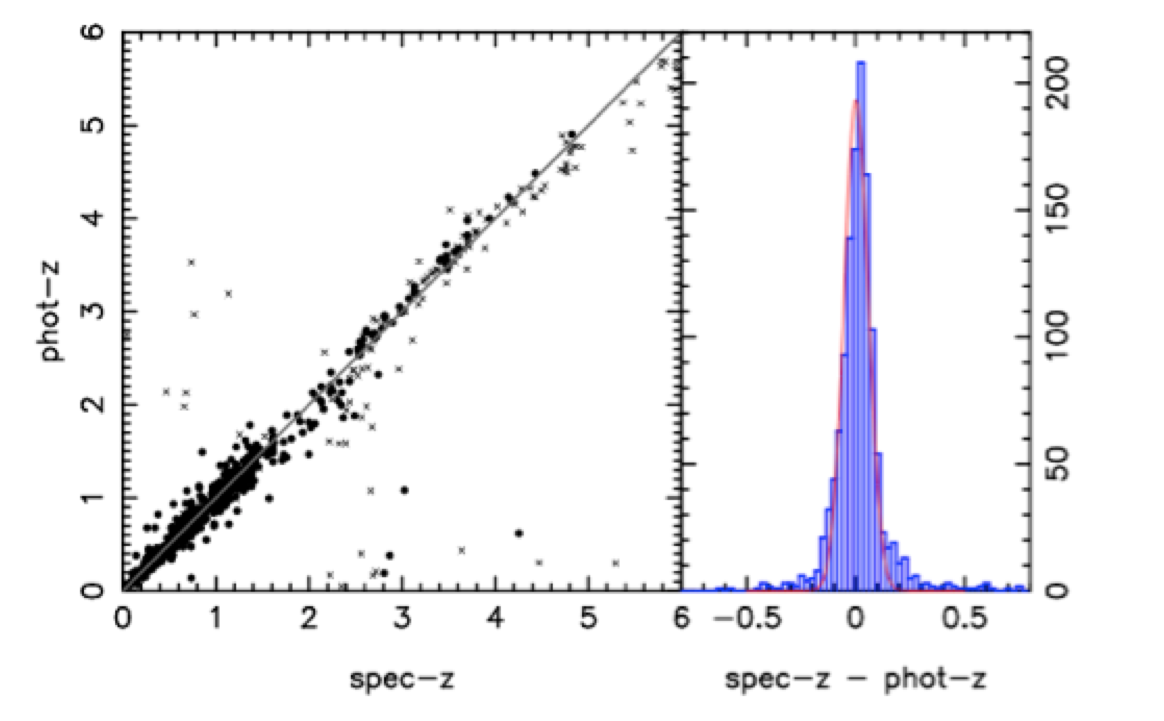 (from Brian Mobasher)
(from Brian Mobasher)
So we can look at the deep imaging, estimate redshifts (then
confirm spectroscopically for better accuracy when necessary) and look
at samples of galaxies at different redshifts. From Conselice, ARAA, 2014:
High redshift galaxies often look smaller, lumpier, and bluer than galaxies at intermediate and low redshift.
What about morphology? Look at massive galaxies (again from Conselice,
ARAA, 2014). The mix of types appears to change with redshift --
Peculiar objects and disky things first, spheroidal (E/S0) types later. But this is almost certainly very dependent on environment and galaxy mass!
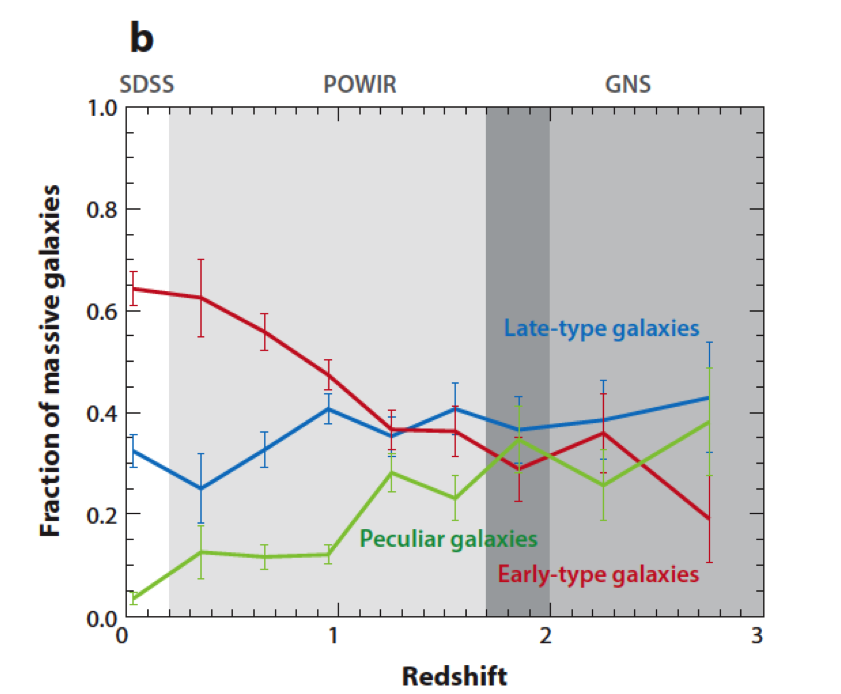 (remember, late type = spirals, early type = elliptical/S0)
(remember, late type = spirals, early type = elliptical/S0)
 . Things that might take time in the field environment can happen faster in dense environments.
. Things that might take time in the field environment can happen faster in dense environments. . Things that might take time in the field environment can happen faster in dense environments.
. Things that might take time in the field environment can happen faster in dense environments.